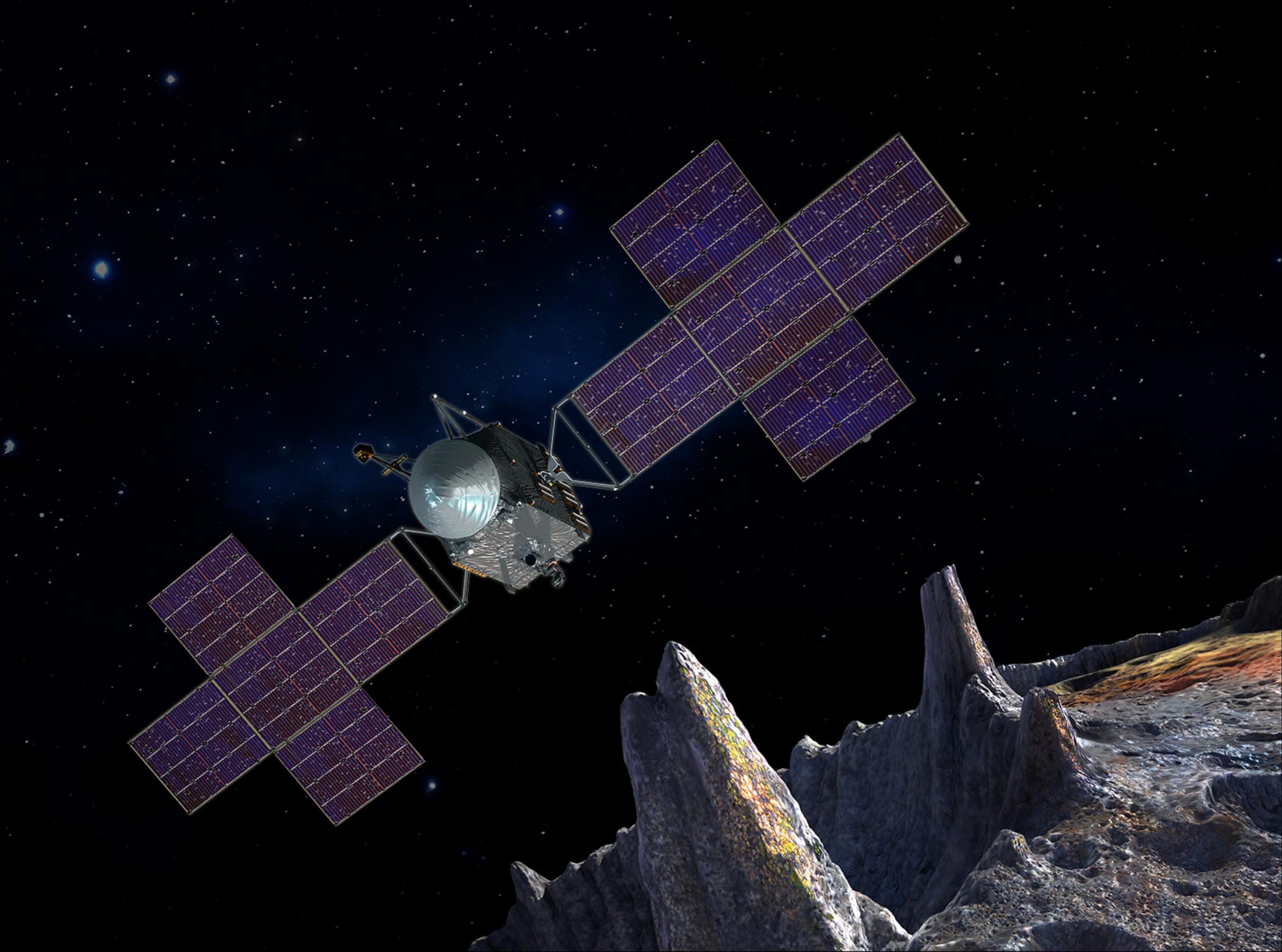
SpaceX’s banner year of Falcon Heavy launches will add a new mission to its ranks tomorrow, when NASA’s Psyche spacecraft—destined to explore a potato-shaped, metal-rich asteroid of the same name—takes flight from historic Pad 39A at the Kennedy Space Center (KSC) in Florida at 10:16 a.m. EDT. Having already flown three times so far in 2023, the high-energy demands of Psyche require the Heavy’s brand-new core stage to be expended on this flight, with its twin side-boosters each making their fourth outings and targeted to execute synchronized touchdowns on Landing Zones (LZ)-1 and 2 at Cape Canaveral Space Force Station, some 8.5 minutes after liftoff.
Weather officials are currently predicting a 20-percent probability of acceptable conditions for Thursday’s opening launch attempt. An area of low pressure presently developing in the Gulf of Mexico along a boundary currently stalled across Southern Florida is predicted to induce rain and thunderstorms, creating a risk of violating the Anvil, Cumulus and Surface Electric Field Rules.
It will be the eighth Falcon Heavy to fly since its dramatic maiden voyage in February 2018. Since then, the triple-barreled heavylifter completed a pair of missions in 2019, another late last fall and three more in January, April and July of 2023, with Psyche and the U.S. Space Force’s highly classified USSF-52 squeezed into the year’s final quarter.
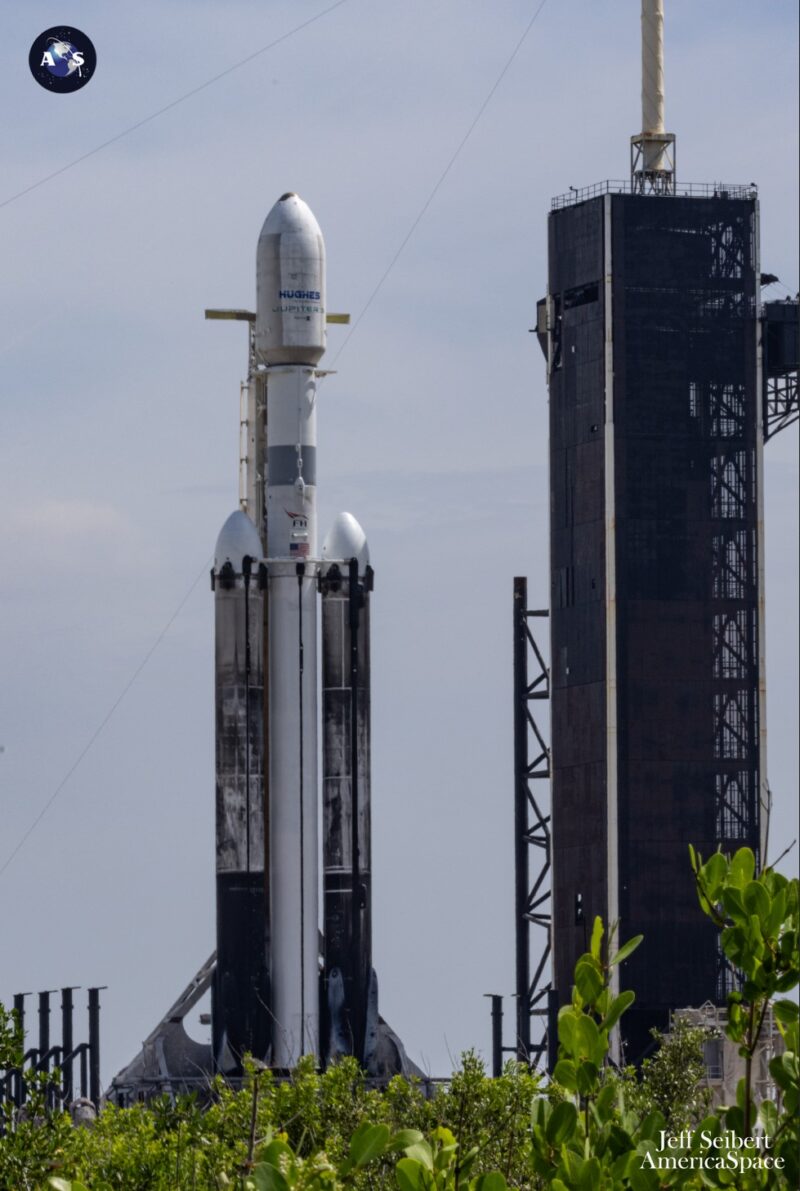
But Psyche’s 1.5-billion-mile (2.4-billion-kilometer) mission has been waiting in the wings for far longer. The mission was selected as one of five finalists for NASA’s low-cost Discovery Program in October 2015 and was intended from the outset to visit the 140-mile-wide (220-kilometer) metal-rich asteroid Psyche, whose looping solar orbit carries it as near as 234 million miles (378 million kilometers) and as far as 309 million miles (497 million kilometers) from the Sun.
Discovered in 1852 and named in honor of the Greek goddess of the soul (from whom the term “psyche” originates), Psyche is the largest and most massive of the Solar System’s metal-rich asteroids and its iron-nickel bulk constitutes about one percent of the entire mass of material occupying a “belt” between the orbits of Mars and Jupiter. Long hypothesized to be the exposed core of a protoplanet—a theory now largely ruled out—Psyche is known from ground-based observations to possess a pair of enormous craters, some 56 miles (90 kilometers) wide, as well as a group of impact features near its south pole.
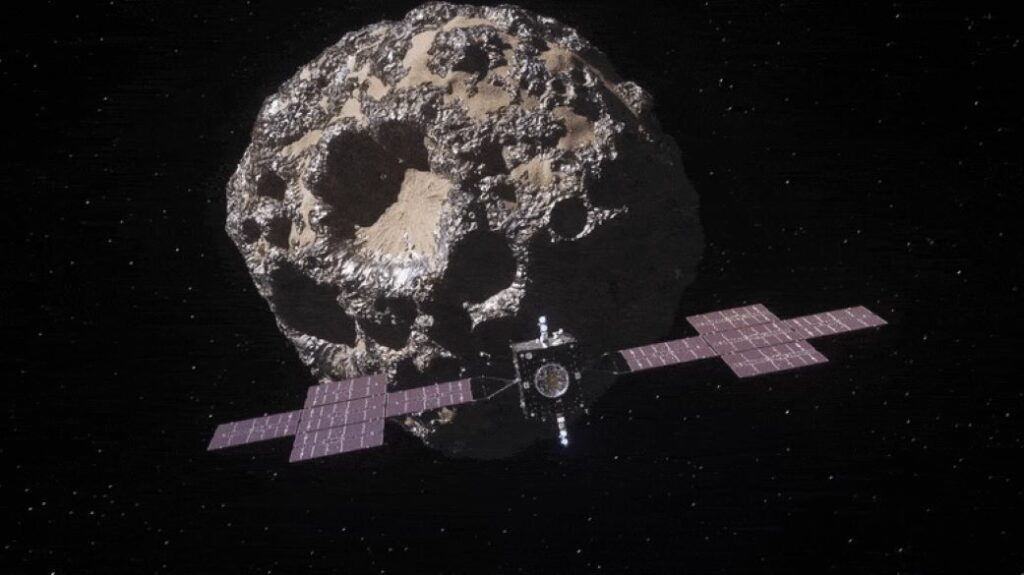
The selection of Psyche for further study came on the heels of NASA’s November 2014 request for proposals for a new Discovery-class exploration mission. At the same time, Space Systems/Loral (SS/L) of Palo Alto, Calif.—today part of Maxar—was identified as the mission’s industrial partner, its tried-and-tested SSL-1300 spacecraft “bus” architecture supporting a payload conceived by the Jet Propulsion Laboratory (JPL) in Pasadena, Calif., and Arizona State University (ASU) in Tempe, Ariz.
In January 2017, Psyche and another mission, the Lucy voyage to explore multiple Trojan-class asteroids which lead or trail Jupiter’s orbit, were selected by NASA as the next members of its Discovery Program. Planning called for Psyche, whose costs were capped at $450 million, to launch in October 2023, executing gravity-assist maneuvers at Earth in 2024 and Mars in 2025, before reaching its destination in 2030 for around 20 months of orbital mapping, geochemical observations and gravity-field modeling.
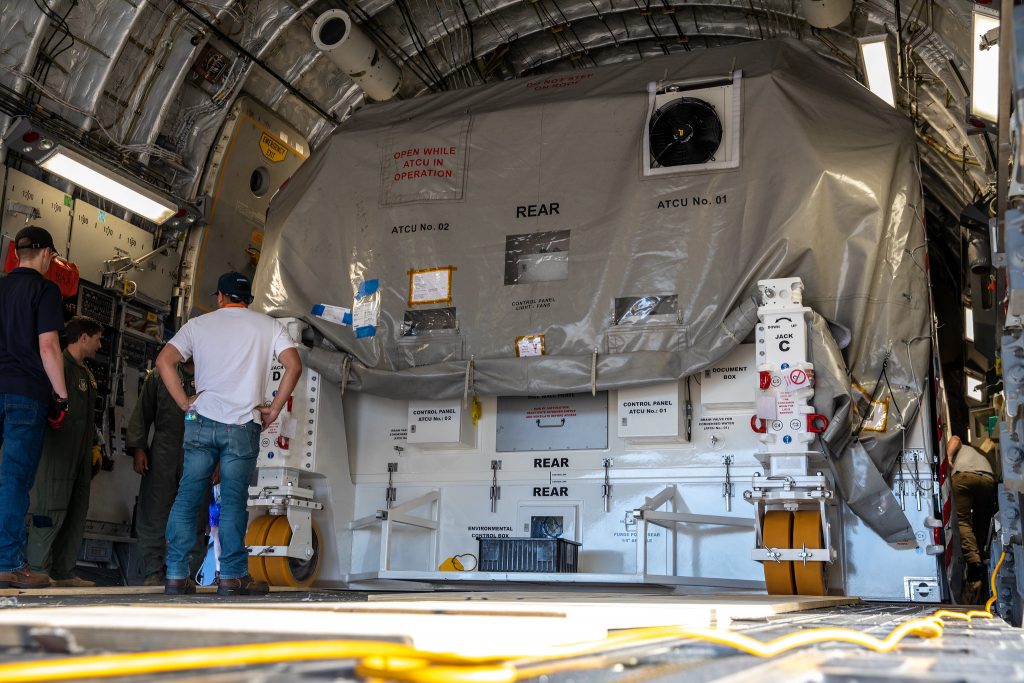
“This is an opportunity to explore a new type of world, not one of rock or ice, but of metal,” said Principal Investigator Lindy Elkins-Tanton of ASU. “Visiting the asteroid Psyche will be the first time humans will ever be able to see a planetary core. Having the Psyche mission selected for NASA’s Discovery Program will help us gain insights into the metal interior of all rocky planets in our Solar System, including Earth.”
By May 2017, Psyche’s launch was advanced a year from October 2023 to summer 2022, producing an arrival at the asteroid in January 2026, four years sooner than originally intended. “We challenged the mission design team to explore if an earlier launch date could provide a more efficient trajectory…and they came through in a big way,” said Jim Green, director of the Planetary Science Division at NASA Headquarters in Washington, D.C. “This will enable us to fulfil our science objectives sooner and at a reduced cost.”
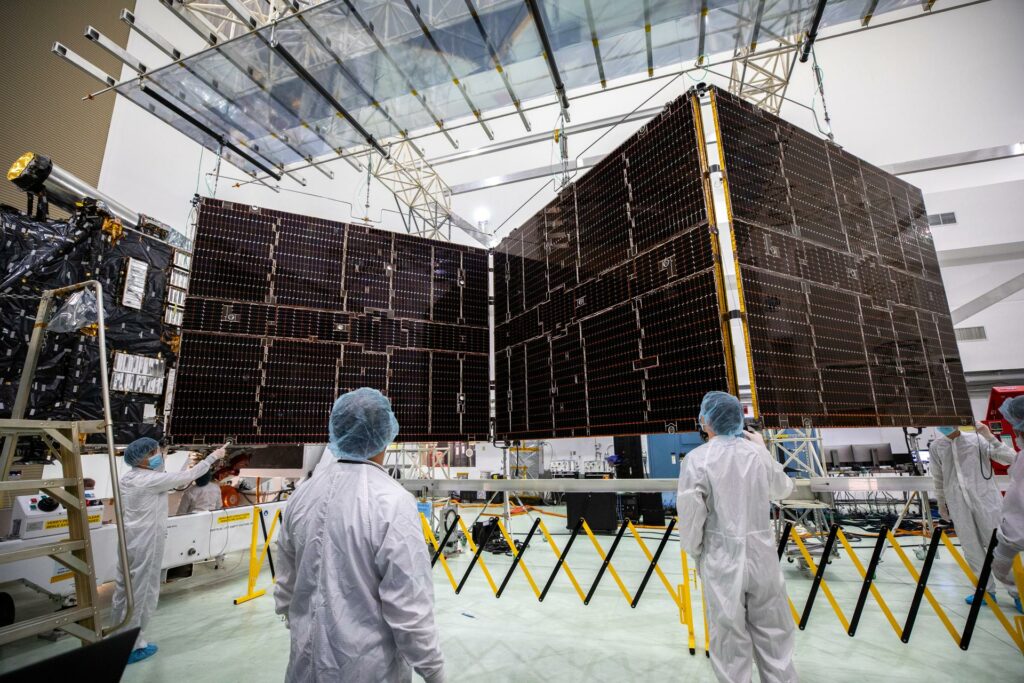
Psyche’s revised trajectory thus shortened the cruise duration, as well as keeping the spacecraft sufficiently far from the Sun to reduce the amount of heat-shielding. Its solar array was extensively redesigned from a four-panel pair of straight wings to a five-panel, X-shape to produce greater power and durability.
The spacecraft entered its design and fabrication phase (Phase C) in mid-2019, when engineers began finalizing system designs and developing plans and procedures for Psyche and its mission. And in February of 2020, NASA awarded SpaceX a $117 million contract to launch Psyche aboard a Falcon Heavy booster in August 2022.
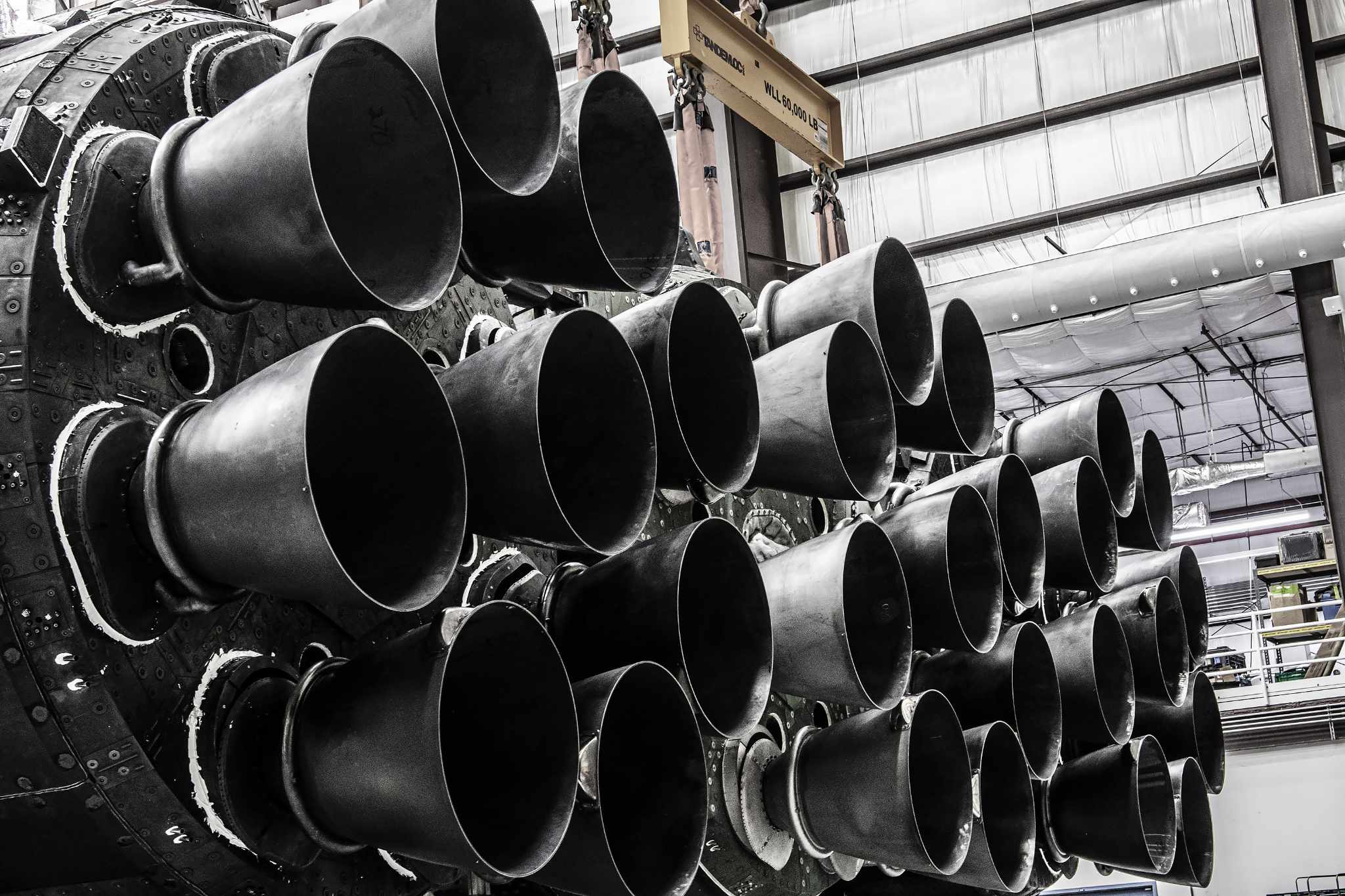
Early in 2021, despite the worldwide ravages of the COVID-19 coronavirus pandemic, the mission moved into its final phase of operations (Phase D), with actual components being delivered to JPL for testing, assembly and integration. In March, Psyche’s Solar Electric Propulsion (SEP) “chassis”—including the 6.5-foot-wide (2-meter) high-gain antenna—was delivered by Maxar into High Bay 1 of JPL’s Spacecraft Assembly Facility for final assembly and operational checkout.
Last year, the spacecraft was put through a punishing raft of electromagnetic, thermal-vacuum, acoustic, vibration and shock-load tests at JPL, which validated its flightworthiness. And in May 2022, Psyche was transported from JPL, firstly to March Air Reserve Base in Riverside County, Calif., then flown cross-country aboard a C-17 aircraft to KSC’s Launch and Landing Facility (LLF). The expansive range of launch options extended from 1 August through 11 October, pending range availability.
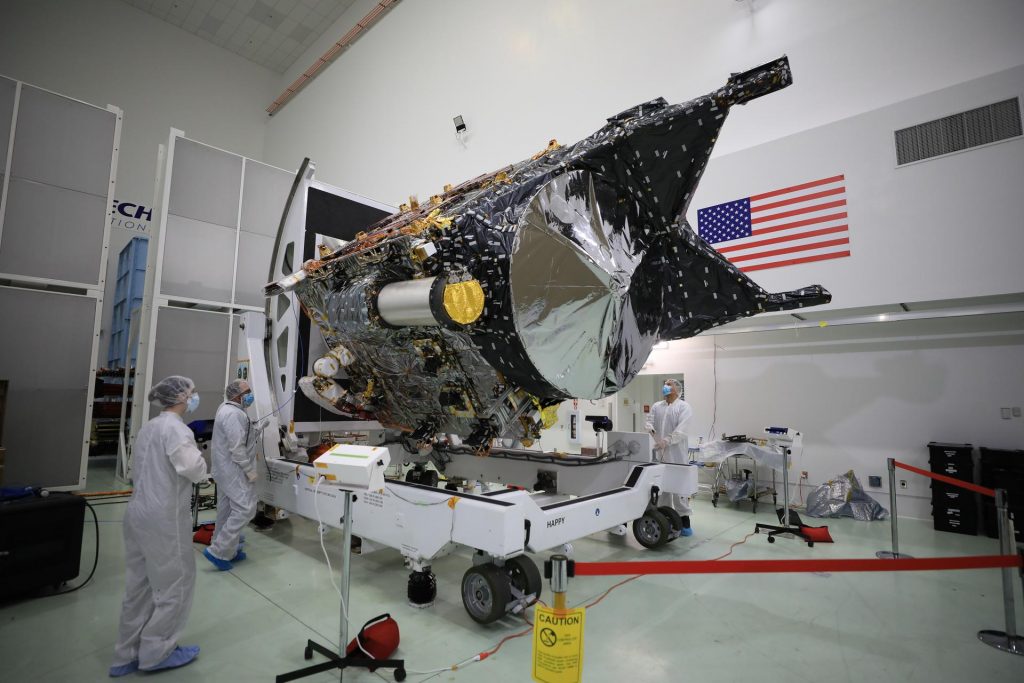
Then, in June 2022 NASA announced that Psyche would no longer meet its launch window that year, due to the late delivery of the spacecraft’s flight software and testing equipment. With insufficient time to complete the requisite testing of the software, NASA elected to postpone the mission until the next—and the original—launch window, opening in October 2023. Teams had already pushed the launch from 1 August to no sooner than 20 September, in hopes that the work could be completed in time, but to no avail.
“Flying to a distant metal-rich asteroid, using Mars for a gravity assist on the way there, takes incredible precision,” said JPL Director Laurie Leshin. “We must get it right. Hundreds of people have put remarkable efforts into Psyche during this pandemic and the work will continue as the complex flight software is thoroughly tested and assessed. The decision to delay the launch wasn’t easy, but it is the right one.”

An independent review board, commissioned by NASA’s Science Mission Directorate and JPL, began work in July 2022 to examine “project and institutional issues” which led to the Psyche delay and in November the results noted “an imbalance between the workload and the available workforce at JPL”, recommending “increased staffing, establishing open communications and an improved reporting system, as well as strengthening the review system to better highlight what issues might affect mission success”.
By now, NASA had officially retargeted Psyche to launch during a three-week window, extending from 5-25 October 2023, which would produce an arrival at the asteroid in August 2029 for 26 months of science-gathering. In August, the spacecraft was transferred to Building 9 at Astrotech Space Operations facility for loading of xenon gas into seven 22-gallon (100-liter) tanks to power Psyche’s four Hall thrusters.
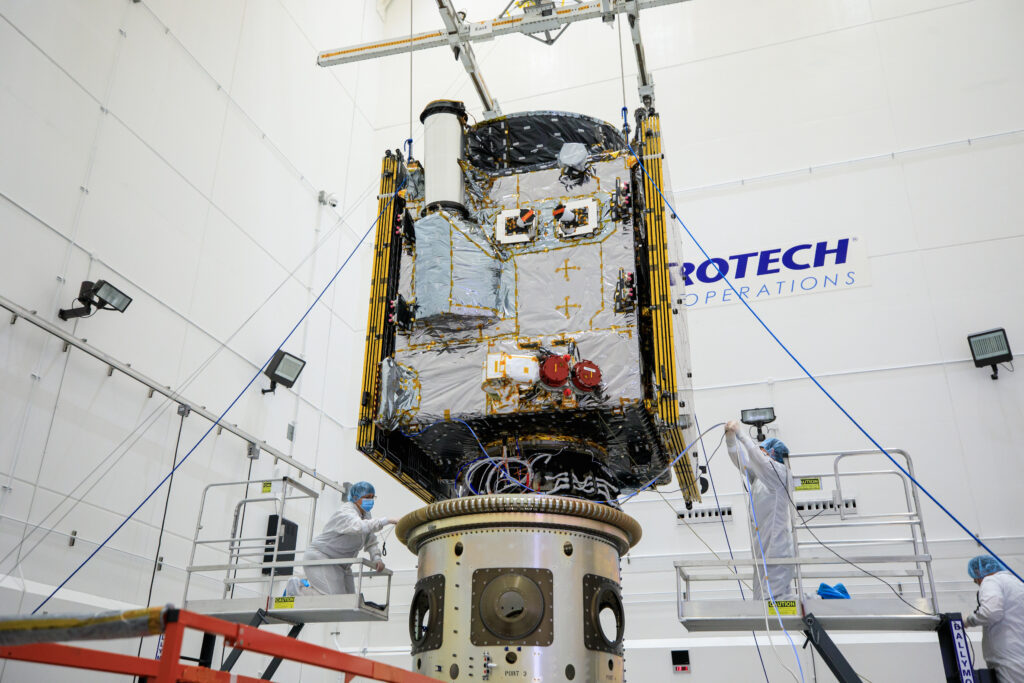
But late last month, the planned launch at 10:38 a.m. EDT on 5 October was postponed another week, to enable NASA teams to complete verifications of the parameters used to control Psyche’s nitrogen cold gas thrusters. The parameters were recently adjusted in response to updated, “warmer” temperature predictions for the thrusters, which will be used to point the spacecraft in support of science, power, thermal and other demands, including orientation and momentum management.
A Flight Readiness Review (FRR) was concluded without incident on 28 September and the following day SpaceX rolled the Falcon Heavy out to Pad 39A for a Static Fire Test of its 27 Merlin 1D+ engines. For this mission, the rocket includes a brand-new center core (B1079) and a pair of previously-flown side-boosters (B1064 and B1065).
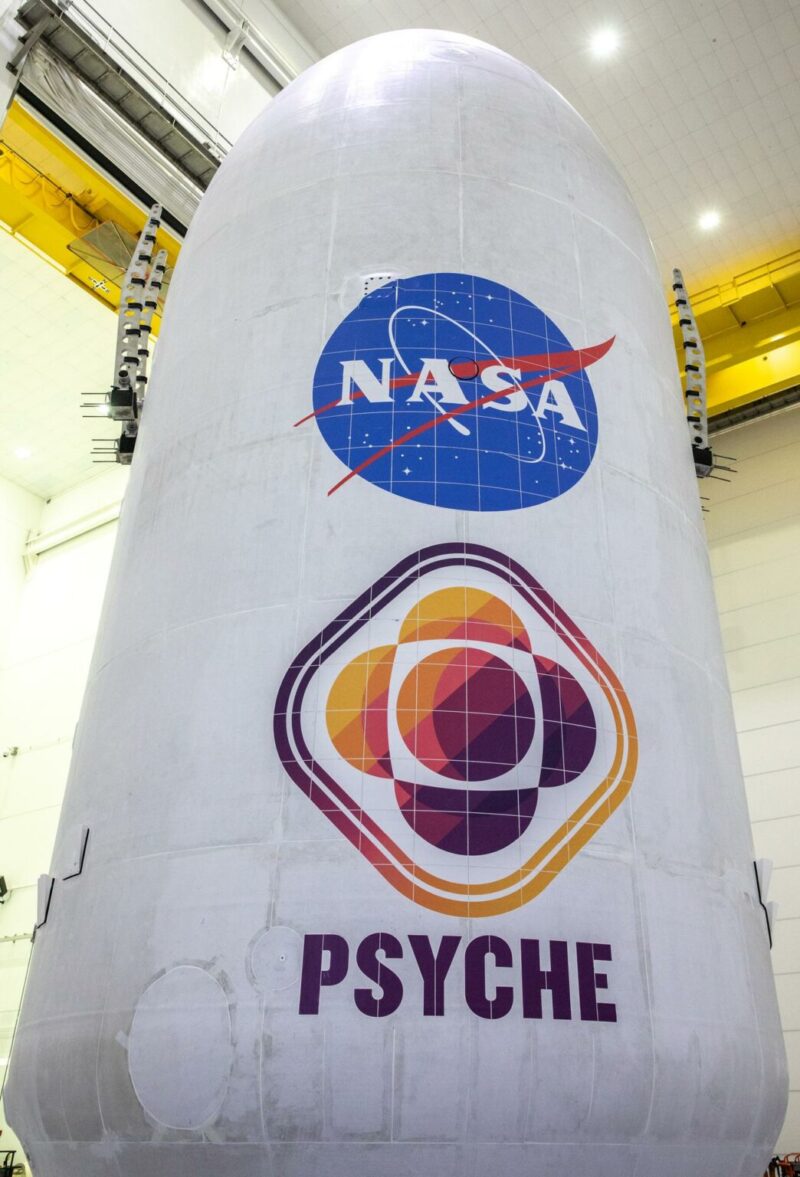
The latter are both making their fourth flights, having served in the same capacity as Falcon Heavy side-boosters on past missions in November 2022 and January and July of this year. Both will return to synchronized touchdowns on solid ground at the Cape’s Landing Zones (LZ)-1 and 2, whilst the high-energy lifting requirements of Psyche demand that B1079 will be expended on this flight. Late last week, Psyche was transferred to the SpaceX hangar at Pad 39A for encapsulation inside the Falcon Heavy’s payload fairing.
Aboard Psyche will be four scientific instruments, totaling 66 pounds (30 kilograms), including a multispectral imager to furnish high-resolution imaging of metallic and silicate constituents, a gamma-ray and neutron spectrometer to map the asteroid’s elemental composition, a magnetometer to examine remnant magnetism in Psyche and an X-band gravity science investigation for intrinsic gravity-field measurements and observations of internal structural dynamics.
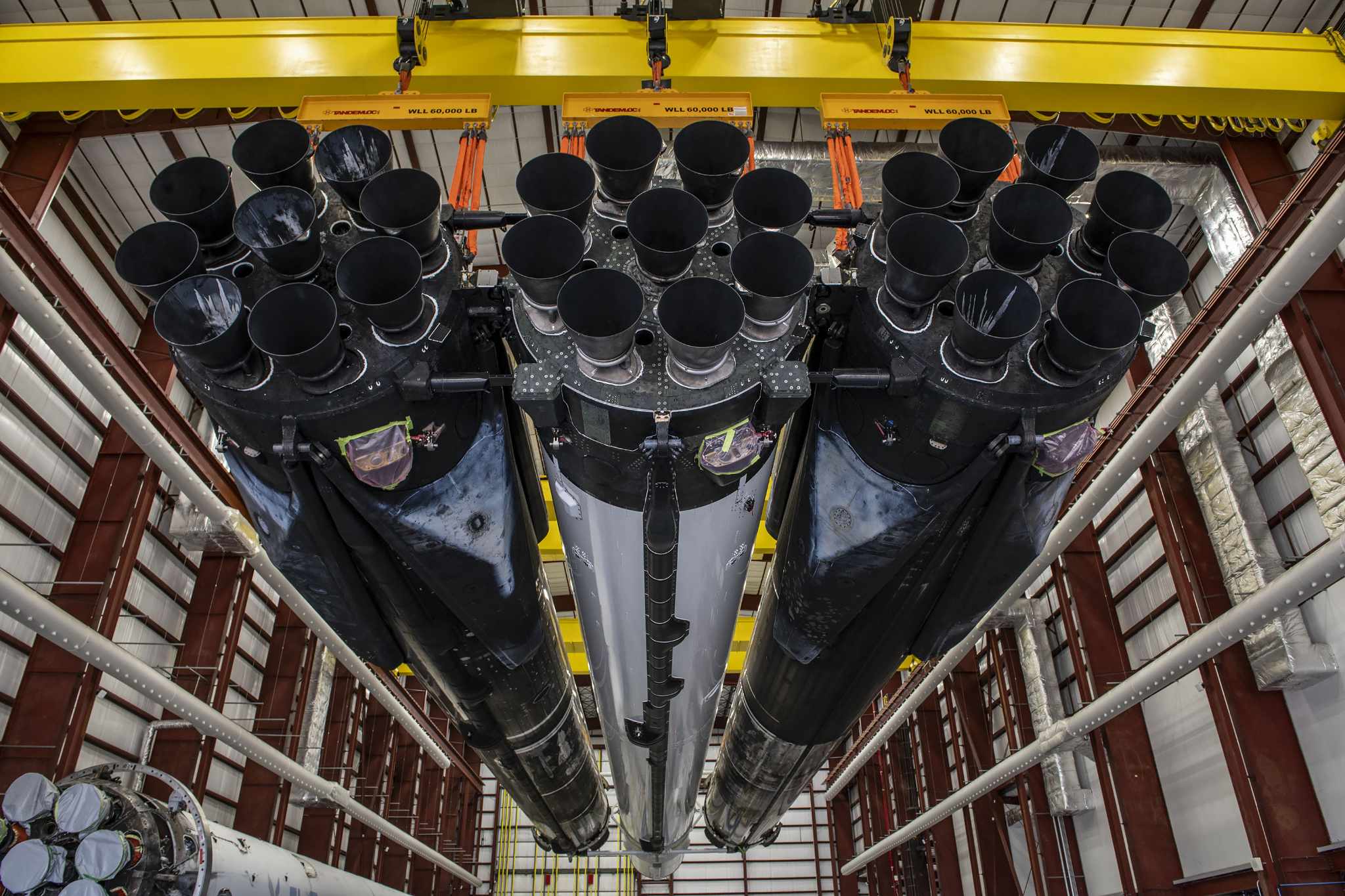
Psyche will also test an experimental laser communications system called Deep Space Optical Communications (DSOC), which will evaluate the capability to increase the spacecraft’s communications performance and efficiency by ten to a hundred times over conventional means. Developed by JPL and supported by a near-infrared laser transceiver aboard Psyche itself and laser transmitters and receivers on the ground, DSOC operations will begin shortly after Thursday’s launch and continue as the spacecraft travels further from Earth towards its gravity-assisted flyby of Mars.
The 55-pound (25-kilogram) DSOC will mark NASA’s first demonstration of optical communications beyond the Earth-Moon system. Its near-infrared transmitter will send high-rate data to the ground, while a sensitive photon-counting camera will receive a modulated laser beam uplinked from JPL’s Table Mountain facility near Wrightwood, Calif.
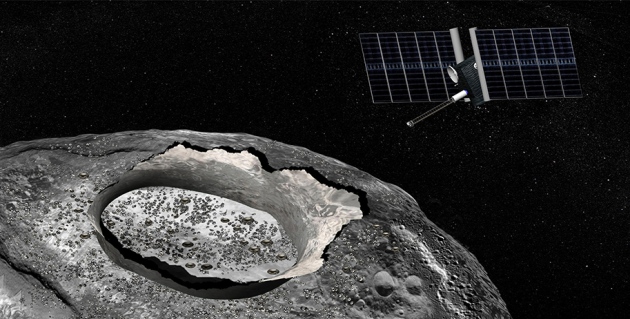
After departing Earth, hopefully tomorrow, the 5,750-pound (2,600-kilogram) Psyche will embark on a lengthy cruise to its asteroidal namesake. It will gain a gravitational push from Mars in three years’ time, with arrival at Psyche currently expected in August 2029.
There, the spacecraft will spend at least 21 months circling the asteroid, operating in a group of orbital “regimes” of steadily decreasing altitude, from “Orbit A” at 430 miles (700 kilometers) to “Orbit D” at just 53 miles (85 kilometers). These orbits will enable a range of observations of Psyche, including the identification of possible magnetic-field signatures, preliminary topographical mapping, gravity-field investigations and analysis of surface chemical constituents.




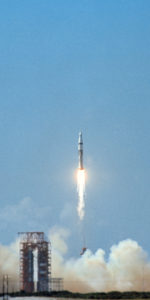
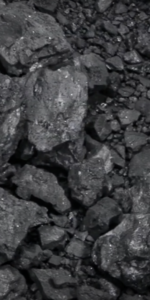
6 Comments
6 Pings & Trackbacks
Pingback:“Not a Black Sabbath”: SpaceX Aims for Dual Launches Tomorrow, Psyche Up First - AmericaSpace
Pingback:“Not a Black Sabbath”: SpaceX Aims for Dual Launches Tomorrow, Psyche Up First - SPACERFIT
Pingback:Falcon Heavy Successfully Launches NASA’s Psyche, Looks to Record-Setting Year-End - AmericaSpace
Pingback:Falcon Heavy Successfully Launches NASA’s Psyche, Looks to Record-Setting Year-End - SPACERFIT
Pingback:SpaceX Completes Saturday Double-Header, Flies Under “Pristine” Space Coast Skies - AmericaSpace
Pingback:SpaceX Launches Year’s 70th Falcon 9, Continues Record-Breaking Year - SPACERFIT